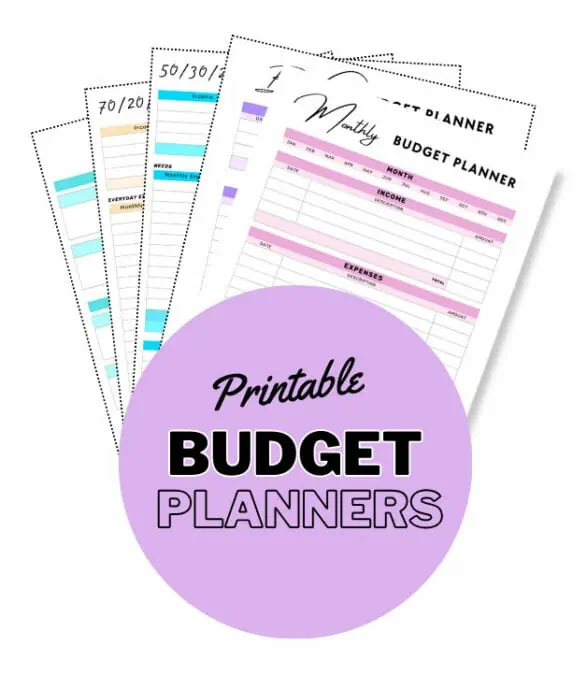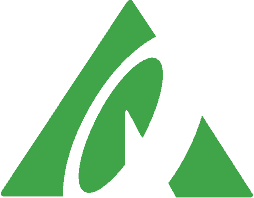While there are government plans that provide income to seniors in Canada, saving for retirement is a must if you plan on living comfortably and ticking off all that ‘stuff’ on your bucket list.
That said, unless your workplace has automatically enrolled you in a pension plan or Group RRSP, the onus is on you to set up a retirement savings plan.
How much money should you save for retirement?
The amount you need will vary depending on several factors, including your lifestyle (current and in retirement), housing situation, health, the age at which you retire, expected government benefits, and more.
A Scotiabank investment poll showed that 70% of Canadians worried they were not saving enough for retirement. This data is close to the 63% of Americans who feel the same about their retirement savings.
Below I cover some of the best ways to save for retirement in Canada, whether you are in your 30s, 40s, 50s, or 60s.

Ways To Save For Retirement in Canada
The three main ways to save towards retirement involve registered investment accounts that are tax-friendly, including:
- Registered Retirement Savings Plan (RRSP)
- Tax-Free Savings Plan (TFSA)
- Workplace Pensions and Group RRSPs
A. Registered Retirement Savings Plan
The Registered Retirement Savings Plan allows you to set aside money in a savings or investment account, where it grows tax-free until you start making withdrawals.
Its two main advantages are:
- You can deduct contributions from your taxable income, thus lowering your taxes.
- Your investment growth is not taxed, while your money remains invested in the plan. This enables your account to grow faster due to tax-free compounding.
When you start withdrawing funds from your RRSP in retirement, it will be taxed. However, most Canadians fall into a lower tax bracket in retirement.
How much can you contribute?
The annual contribution limit to an RRSP is 18% of your income up to a maximum amount. For 2024, the maximum contribution threshold is $31,560.
If you cannot maximize your contributions in a year, you can carry it forward and add it to your contribution room in future years.
Downsides of an RRSP
RRSPs are designed for retirement savings, not short-term financial goals or as an emergency fund.
When you make withdrawals, it is taxed at your marginal tax rate. Also, withdrawals cannot be re-contributed, and that contribution room is lost for life – except for contributions relating to buying a home and Lifelong Learning Plans.
The amount you can contribute to an RRSP depends on your income. If you don’t earn an income (salary, rent, bonus, spousal/child support), you can’t contribute to an RRSP.
Lastly, mandatory RRSP withdrawals (RRIF) starting at age 72 may result in loss of other income, e.g. Guaranteed Income Supplement or OAS.
Related Reading:
B. Tax-Free Savings Account
The TFSA is Canada’s most versatile savings account, and you can use it to save for any purpose, including retirement.
TFSA advantages include:
- You can withdraw money from your TFSA anytime and re-contribute the amount starting the following year. Withdrawals are tax-free.
- TFSA investment profit is tax-free for life, which helps your account grow faster.
- Unlike the RRSP, TFSA withdrawals do not count towards your income and won’t exclude you from government income-tested benefits such as GIS and OAS.
- You don’t need ‘earned’ income to contribute to a TFSA. You can save or invest money from any source.
How much can you contribute?
The annual TFSA limit is set by the government and is indexed to the inflation rate.
For 2024, it is $7,000. Unused contribution room can be carried forward indefinitely.
Downsides of a TFSA
You cannot deduct your TFSA contribution from your taxable income (i.e. it does not generate a tax refund).
Overcontributing to your TFSA will result in penalties equivalent to 1% of the excess amount per month.
Lastly, there is a smaller contribution limit for the TFSA. While your income level could allow you to contribute up to $31,560 to your RRSP in 2024, the maximum annual TFSA limit is $7,000.
C. Workplace Pensions and Group RRSPs
You are fortunate if you have a workplace pension that your employer contributes to or you and your employer contribute to it.
The two main types of workplace pensions are:
- Defined benefit plans and
- Defined contribution plans
If your employer offers an opportunity to match your contributions to a retirement account, jump at the offer!
In addition to all three accounts, you can also use a non-registered investment account to save for retirement.
Retirement Savings Tips
Want to get your retirement savings in order? Here are some tips:
1. Start Early
Time can be your friend when saving towards retirement. The more time you have to invest, the better.
Example: Assuming a retirement age of 65, if you start investing at age 30 and you contribute $500 every month (or $6,000 per year) for 35 years, your RRSP will be $568,046 at age 65 (assuming a 5% annual return which is very conservative). If you had started investing at age 40 instead and contributed $500/month for 25 years, your RRSP would be worth $297,755 at age 65.
This example shows the power of compound interest over time. By contributing $60,000 more and an additional 10 years, the RRSP account increases by over $270,000 (almost double)!
You can compare other scenarios using this RRSP Calculator from RBC.
2. Automate Your Contributions
Set up your TFSA and RRSP accounts to receive automatic contributions from your chequing on a schedule that works for you, e.g. weekly, bi-weekly, or monthly.
Chances are that you will save consistently when you don’t have to do it manually each time.
3. Have a Budget and a Plan
Create a budget that leaves room for investing after taking care of your expenses.
Your retirement plan should include your retirement date, how much you plan to save, and how you plan to reach your goals. This step is crucial as it forces you to reconcile your expectations with what you are doing today.
If you are expecting a ‘fat’ retirement, you may want to increase your income sources and investments today.
Become a Budgeter and Improve Your Finances
Living paycheck to paycheck? Use these printable budget planners to get your finances back on track. They will help you understand how your income is spent and make it easier to allocate funds to pay off debt, save, and invest. These planners take the chore out of budgeting and make it so much fun!
Here’s what you get:
- 7 beautiful printables, including:
- Bi-weekly and monthly budget planners
- Financial goals trackers
- Debt snowball tracker
- 70/20/10 budget planner
- 50/30/20 budget planner
- Financial habits tracker
- Sample templates
Visit our shop to get your copies.

4. Maximize Your Registered Accounts
The RRSP and TFSA shelter your profits from taxation, which helps you grow your money faster.
Therefore, it makes sense (in most cases) to first max out these accounts before using those that do not offer tax advantages.
5. Rebalance Your Investments
Routinely check your investments to ensure your asset allocation is in line with your risk tolerance. If it has become too risky or too conservative (depending on your preference), you should rebalance it to get back on track.
Also, as you get closer to retirement, you should start planning for a tax-efficient way to withdraw/liquidate assets.
6. Get Rid of Debt
Eliminate high-interest debt, such as credit card debt, before retirement.
I generally advise people to pay off this type of debt before they even consider investing at all. You will most likely not earn the 19.99% interest fee charged by your credit card on most traditional investment vehicles.
7. Be Flexible
Are there changes you can make to your lifestyle now or in retirement to make things work? Build some flexibility into your retirement plan.
Options include downsizing, relocating to a cheaper country, working part-time, etc.
8. Remember Government Benefits
Work your expected CPP and OAS pension amounts into your plan. For example, there may be options to maximize pension benefits by limiting clawbacks.
9. Conduct a Pre-Retirement Checkup
A pre-retirement checklist and checkup can help close gaps in your plan.
10. Get Professional Help
A financial planner may be able to help you create a plan that works.
How To Invest For Retirement in Canada
How you invest your retirement funds can significantly impact how much you have when you retire.
Some good options are:
Robo-Advisor
Online wealth management companies (aka Robo advisers) help you invest using low-cost Exchange-Traded Funds (ETFs).
They offer various accounts (RRSP, TFSA, LIRA, LRSP, and RRIF) and manage your portfolio on your behalf, so you won’t have to worry about rebalancing, asset allocation, tax loss, harvesting, etc. Many of them also offer free financial advice.
One main advantage of Robo-advisors over traditional mutual funds is that you save money on management fees. For example, the average equity mutual fund has an annual fee of 1.98%. With a Robo-advisor, your average fee is around 0.70%.
You can learn about the various Robo-advisor offerings in Canada in this guide.
One of the most popular Robo-advisor services in Canada is Questwealth. You can invest up to $10,000 free of charge for one year when you sign up. It also has one of the lowest fees for online wealth managers.
Self-Directed Trading
If you are comfortable managing your own portfolio, you can trade stocks and ETFs using a discount brokerage platform.
Self-directed trading provides opportunities to save even more on fees; however, you are fully responsible for ensuring your portfolio stays on target.
Here is a list of trading platforms that offer no-commission ETF trading in Canada.
You can also avoid paying trading commissions when you trade thousands of ETFs using Wealthsimple Trade and Questrade.
Wealthsimple Trade

Trade stocks, ETFs, and options
Excellent trading platform for beginners
Deposit $150+ to get a $25 cash bonus
Transfer fees waived up to $150
Questrade

Trade stocks, ETFs, options, FX, bonds, CFDs, mutual funds, etc.
Get $50 trade credit with $1,000 funding
Low and competitive trading fees
No quarterly inactivity fees
Access to advanced tools and trading data
Top platform for advanced traders
Transfer fees waived
Savings Accounts
Savings accounts barely pay any interest these days.
If you need to keep your RRSP or TFSA funds in a savings account, you should use a high-interest account that pays a decent rate.
Below are some resources for finding the best rates:
How To Save For Retirement FAQs
The average CPP pension amount is $772.71 per month or $9,272.52 per year (at age 65). The maximum monthly OAS amount is $707.68 or $8,492.16 per year. If you receive the average CPP and maximum OAS, your annual retirement income from both sources is $17,764.68, plus other retirement income sources.
Your retirement savings needs depend on how much you plan on spending annually and the income shortfall after accounting for government pensions. Using the 4% withdrawal rule, if you plan on spending $40,000 per year, you will need approximately $1 million.
See various scenarios.
Experts recommend investing at least 10% of your income. However, this may not be adequate, depending on your needs. You can use a retirement calculator to determine how much contributions will get you to your magic number.
Using the 4% withdrawal rule, you will need at least $2.5 million.
It depends. Assuming you have no other income sources and government pensions do not kick in until age 65, you could run out of money if this is not managed well. At a 4% withdrawal rate, you would be looking at around $12,000 per year, which is not a lot of money.
Related: Ideal Retirement Savings by Age.



